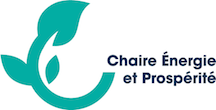Article published in Environmental Science and Technology (53, 19, 11323-11336) – August 2019
The dynamics of copper production is modeled with a prey–predator approach linking the evolution of reserves to that of industrial wealth. Our model differs from earlier approaches in that it does not require a priori knowledge of the initial stock of resources. The model variables and a long-term reference price are estimated from historical data, taking into account the combined effects on price and reserve of technological improvements and changes in ore grade. The business-as-usual scenarios invariably lead to a peak of primary production by the middle of the century. The peak of production is not the result of the complete exhaustion of exploitable copper but of the combination of (1) the deviation of growth of reserves from the exponential historical trend and (2) the incapacity of technological improvements to offset the increase in production costs. In the leveled-off-demand scenario for which future demand is simulated based on assumed evolutions of world population and gross domestic product per capita, no collapse of primary production is observed within the century for optimistic regeneration of reserves and a collection-recycling rate reaching 70% by 2100, at constant energy prices.
Buy the article on the Environmental Science and Technology’s website
No Upcoming Events found!


